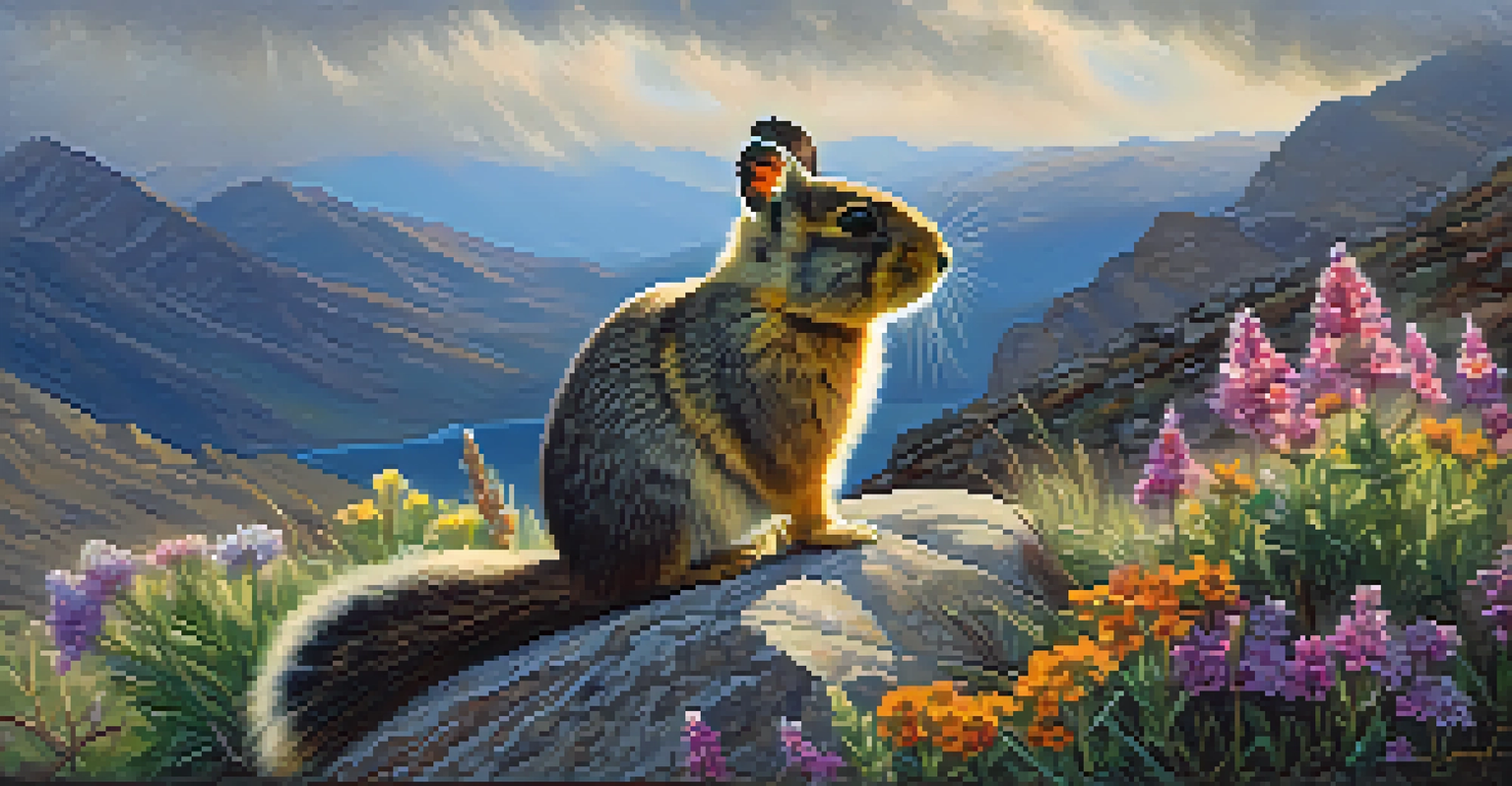Nevada's Endangered Species: Conservation Success Stories

Overview of Nevada's Endangered Species Challenges
Nevada is home to a diverse range of wildlife, but many species face significant threats. Habitat loss, climate change, and human activities have put pressure on these vulnerable populations. Understanding the challenges is crucial for developing effective conservation strategies.
In every walk with nature one receives far more than he seeks.
For instance, the desert tortoise, once abundant, now struggles due to urban development and invasive species. These pressures have led to its classification as a threatened species under the Endangered Species Act. Recognizing these challenges helps mobilize efforts for change.
Without awareness and action, these species could face extinction. Conservationists, scientists, and local communities are stepping up to reverse these trends and protect Nevada's unique biodiversity.
The Role of Conservation Organizations in Nevada
Numerous organizations are dedicated to preserving Nevada's endangered species. Groups like the Nevada Department of Wildlife and the Nevada Conservation Strategy play pivotal roles in these efforts. Their strategies focus on habitat restoration, species monitoring, and public education.

For example, the Nevada Department of Wildlife has implemented recovery plans for various species, ensuring that action is taken based on scientific research. These organizations often collaborate with local communities to create a united front for conservation.
Threatened Species in Nevada
Habitat loss, climate change, and human activities are driving many of Nevada's unique wildlife species toward extinction.
Through partnerships and education, these organizations foster a sense of responsibility among residents. This collective effort is essential for the long-term success of conservation initiatives.
Success Story: The Recovery of the Lahontan Cutthroat Trout
One of Nevada's remarkable conservation success stories is the recovery of the Lahontan cutthroat trout. Once on the brink of extinction, this native fish has made a remarkable comeback thanks to targeted conservation efforts. Restoration of its natural habitat and genetic management played crucial roles in this recovery.
The future will either be green or not at all.
In the early 2000s, efforts began to reintroduce the trout into its historical waters. Working alongside local agencies and volunteer groups, conservationists have successfully established self-sustaining populations in multiple lakes and streams.
Today, the Lahontan cutthroat trout serves as a symbol of hope and resilience in Nevada's conservation landscape. Its story highlights how targeted interventions can yield positive outcomes for endangered species.
Protecting the Desert Tortoise: A Collaborative Effort
The desert tortoise is another species that has seen significant conservation efforts in Nevada. Collaborations among government agencies, non-profits, and local communities are key to its protection. By working together, they aim to ensure the survival of this iconic species.
Actions include habitat restoration, fencing off critical areas, and educational programs that raise awareness about the tortoise's plight. These initiatives have not only helped stabilize its population but have also involved local communities in the conservation process.
Collaborative Conservation Efforts
Conservation organizations, local communities, and government agencies are joining forces to protect endangered species like the desert tortoise.
The success of these efforts showcases how collective action can lead to meaningful change. It's a reminder that protecting our wildlife is a shared responsibility.
Nevada's Unique Flora: The Rare Springflower
In addition to animal species, Nevada boasts unique plants like the rare springflower. This fragile plant is endemic to the region and faces threats from habitat loss and climate change. Conservationists are actively working to protect its remaining habitats.
Efforts include habitat restoration and seed banking to ensure the survival of this species. Research has also been conducted to understand its ecological needs, guiding effective conservation strategies.
The story of the rare springflower illustrates the importance of protecting not just wildlife, but also the unique plant species that contribute to Nevada's biodiversity.
The Impact of Climate Change on Nevada's Endangered Species
Climate change poses a significant threat to Nevada's endangered species, altering habitats and food availability. Rising temperatures and changing precipitation patterns can disrupt the delicate balance of ecosystems. Understanding these impacts is crucial for developing adaptive management strategies.
For instance, species like the pika, which rely on cool mountain habitats, are being forced to move to higher elevations. This shift can create challenges in finding suitable habitats and food sources, further endangering their populations.
Community Engagement is Key
Involving local residents in conservation projects fosters stewardship and promotes sustainable outcomes for Nevada's endangered species.
Addressing the impacts of climate change requires innovative approaches and collaboration among stakeholders. It's essential to integrate climate resilience into conservation planning to safeguard Nevada's wildlife for future generations.
Community Involvement: Engaging Locals in Conservation
Engaging local communities is vital for successful conservation efforts in Nevada. By involving residents in conservation projects, organizations can foster a sense of stewardship for the environment. This community-driven approach often leads to more sustainable outcomes.
For example, citizen science programs allow residents to participate in monitoring endangered species and their habitats. This not only empowers individuals but also enhances data collection for conservation efforts.

When communities take pride in their local wildlife, they contribute to a culture of conservation. This grassroots involvement is essential in ensuring the long-term success of Nevada's endangered species recovery initiatives.
Looking Ahead: Future Conservation Goals for Nevada
As we look to the future, Nevada's conservation goals are ambitious yet achievable. Continued collaboration among government agencies, non-profits, and local communities will be essential for protecting endangered species. Setting measurable goals and tracking progress will help maintain momentum.
Innovative strategies, such as habitat corridors and increased public engagement, are being developed to address ongoing challenges. These proactive measures aim to create a resilient ecosystem for both wildlife and human communities.
Ultimately, the future of Nevada's endangered species depends on collective action and commitment. By working together, we can ensure that these species thrive for generations to come.